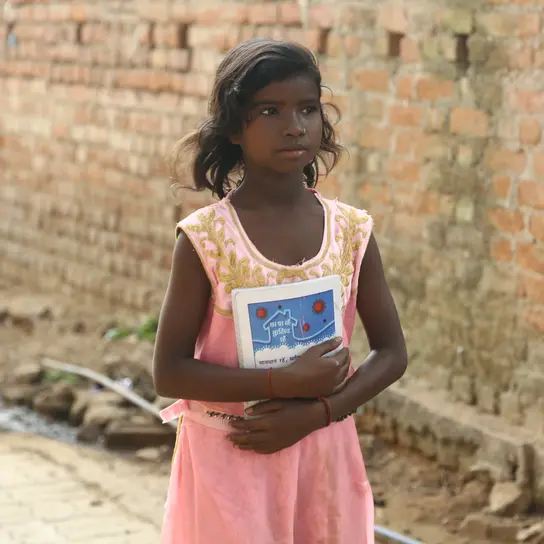India: Paths from exploitative child labor
160 million girls and boys work worldwide - almost half of them under the worst conditions. Suniti was one of these children. Now she is catching up in a bridge school missed teaching material.
Suniti is a fire and flame: "I have so much fun at school!" The girl is eleven years old and lives in the district of Koderma in the Indian state of Jharkhand. Since the beginning of 2021 she has been going to the so -called bridge school in her village. Working children of school -enabled age meet learning content there so that they can then attend a public school.
Your support for strong children!Suniti, like 22,000 girls and boys in the region, had previously worked in mines and shocked the mica of mica. Every day from morning to evening, in heat and dust. The work in the self -dug and unsecured shafts is life -threatening, adults and children are kept spilled and suffocated. The families are poor,
Mica is their only source of income. There is no state aid here.
Terre des Hommes together with its local partner organizations Savera, Samarpan, and Ekjut, enables many children to attend school. Even though it's not easy for the families to forgo their children's wages. Suniti's family, for example, earns about 120 rupees a day, the equivalent of €1.50, from mining. That's barely enough to cover their costs. The crucial support for Suniti's parents: free school meals. A hot meal eases the strain on the family budget.
Suniti wants to be a teacher
At first, Suniti was very shy and quiet. But her teachers encouraged her and supported her. The girl understands quickly and can explain well. She is also involved in the children's group: "We go to the neighbors and talk to them and all children in the village so that they really all go to school!" Suniti has now reached the second class teaching material. Her career aspiration is certain: she wants to be a teacher. This year she will move to the public school. A big step from poverty to a better future.
Terre des Hommes - Help for Miners
Starting in summer 2022, Terre des Hommes will launch additional projects for children and their families who work in mines in 100 villages in the mica mining areas of the Indian states of Bihar and Jharkhand. Internationally, Terre des Hommes is exerting pressure and calling on mica processing companies to end child labor in their supply chains.
What is Mica?
Mica includes a group of 37 minerals that are also known as mica: Mica is used in countless products such as in lipsticks, car paints, computers or cell phones, because the mineral glitters, reinforces fabrics and isolated against heat and electricity.

